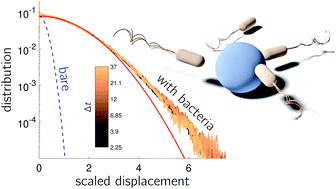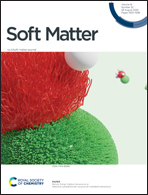Colloidal transport in bacteria suspensions: from bacteria collision to anomalous and enhanced diffusion
Abstract
Swimming microorganisms interact and alter the dynamics of Brownian particles and tend to modify their transport properties. In particular, dilute colloids coupled to a bath of swimming cells generically display enhanced diffusion on long time scales. This transport dynamics stems from a subtle interplay between the active and passive particles that still resists our understanding despite decades of intense research. Here, we tackle the root of the problem by providing a quantitative characterisation of the single scattering events between a colloid and a bacterium, a smooth running E. coli. Based on our experiments, we build a minimal model that quantitatively predicts the geometry of the scattering trajectories, and enhanced colloidal diffusion at long times. This quantitative confrontation between theory and experiments elucidates the microscopic origin of enhanced transport. Collisions are solely ruled by stochastic contact interactions and the ratio of the drag coefficients of the colloid and the bacteria. Such description accounts both for genuine anomalous diffusion at short times and enhanced diffusion at long times with no ballistic regime at any scale.



 Please wait while we load your content...
Please wait while we load your content...